
Yamaha Alpha vs TVS Jupiter scooter comparison: Gallery
- Mar 24, 2014
- Views : 305913


Imagine getting stuck in congested city roads with bumper to bumper traffic. Frustrating? But this is a reality for most of us living in chaotic Indian cities. And because of this rapidly changing landscape, scooters are fast becoming one of the most preferred ways to commute around town. The twist-and-go scooter is quite appealing, since there’s no stress of changing gear or worrying about managing the clutch. No wonder then that the gearless scooter segment has witnessed a double digital growth recently; despite the two-wheeler industry as a whole struggling to achieve a respectable single digit push. To get a share of this rapidly increasing pie, Yamaha has launched not one, but three scooters in the last 18 months. The latest introduction to it is the family oriented Alpha. After our Yamaha Alpha review; it was inevitable that we pitch the new scooter against our previous scooter shootout winner - TVS Jupiter. And here’s how they fared.
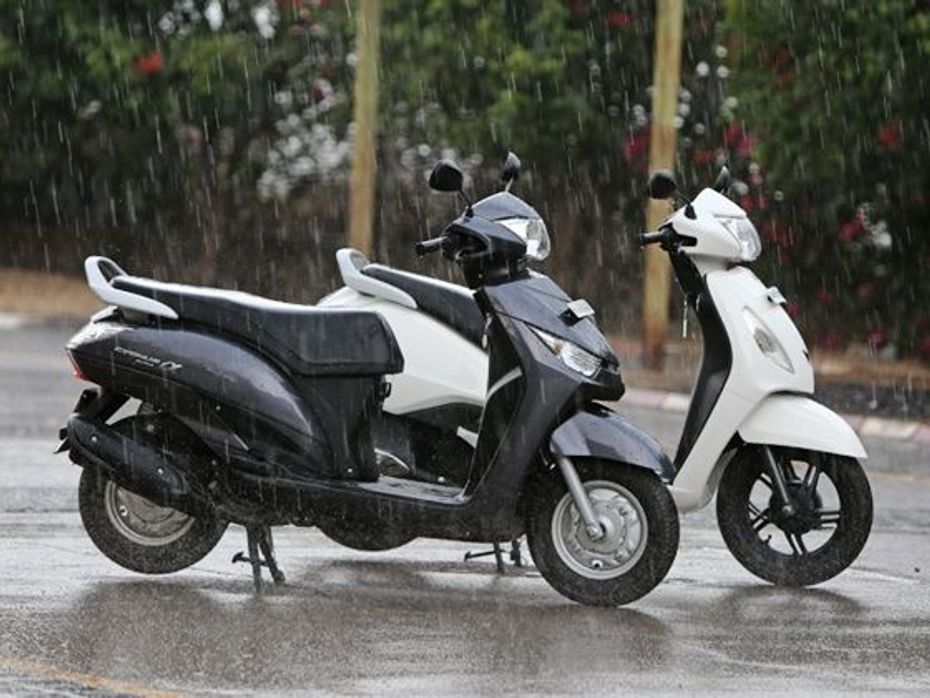
Design and features:
Since both the scooters are targeted at the more evolved buyers, the overall styling has been intentionally kept sober, yet attractive. The Alpha is a contrast to its sibling Ray’s sharp and spunky design, with subtle lines and soft curves. The Yamaha engineers have gone the conventional way and have positioned the headlight on the handle-bar instead of the front fairing as seen on the Ray. Adding some element to the front design are a pair of sharp tear-shaped indicators and a smart Yamaha ‘tuning fork’ badge.
The muscular mudguard and telescopic forks add to the bold and solid styling. The tail-lamp however, is positioned much lower than usual, while the rear indicators are higher up. Yamaha says that this gives the scooter a more sporty design. It might work for some, but I feel that higher the tail lamp, better the visibility for vehicles approaching from behind. Although the Alpha is slightly taller than the Jupiter, its ground clearance is 22mm lower than the TVS and it is also marginally shorter in length and wheelbase. I find the neat side profile of the Alpha appealing, with its up swept exhaust, sleek rear panels and the puffed out front fairing.
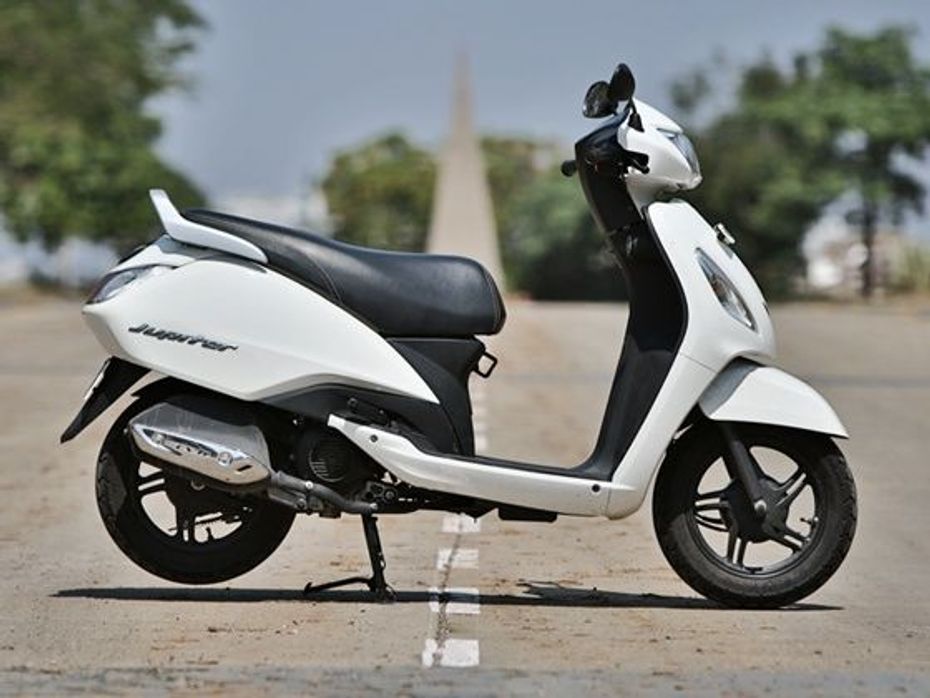
The TVS Jupiter has been applauded for its looks several times already and rightly so. It’s clean and the well-chiseled design seems appealing to most. This well-built scooter features telescopic front forks similar to the Alpha, but has a more robust gas-charged rear shock absorber. Another plus in the Jupiter, is its smart 5-spoke 12-inch alloy wheels shod with tubeless tyre, against the 10-inch ones of the Alpha. The overall built quality of the TVS is top notch and outshines the Yamaha in this department. The cycle parts on the Jupiter are clearly the best in the segment and the scooter is also packed with fantastic features. I particularly like the clever headlight high-low-beam selector which doubles up as pass-switch. In addition to this, it also has a reserve fuel light, LED tail lamps and even an Eco riding mode.
The Alpha has an over-sized analogue instrument cluster which offers basic information to the rider, like speed, odo reading, fuel-gauge and tell-tale lights. But the Alpha’s ordinary fit-and-finish is a letdown, especially since it is coming from the Yamaha house. It has a really long 800mm seat which is flat, firm and is narrow in the front so that your feet can easily reach the ground. The convention under the seat fuel filler means that you have to get off every time you visit the gas station on the Alpha; whereas the Jupiter has it conveniently located on the outside just above the tail-light. Yamaha engineers have carved out spacious 21-inch underseat storage, which is 4-litres more than the TVS, and can even store an open-face helmet. The Alpha also sports a rear tyre hugger, which is a welcome additional feature. The Yamaha Alpha doesn’t really leave a lasting impression with its design, but overall it’s well put together. On the other hand, the Jupiter is far more appealing aesthetically with good built quality.

Engine and handling:
Jupiter’s 110cc engine, which is borrowed from the TVS Wego, is smooth and refined. It is rated with a power output of 8PS and 8Nm of torque, which is adequate for basic city use. The Alpha is powered with the same 113cc engine which is seen in the Ray, and produces slightly low 7.1PS and 8.1Nm of peak power. Surprisingly, the engine gives out vibrations on high revs which can be felt through the body. Both come with CVT (Continuous Variable Transmission) which deliver power to the rear wheels smoothly.
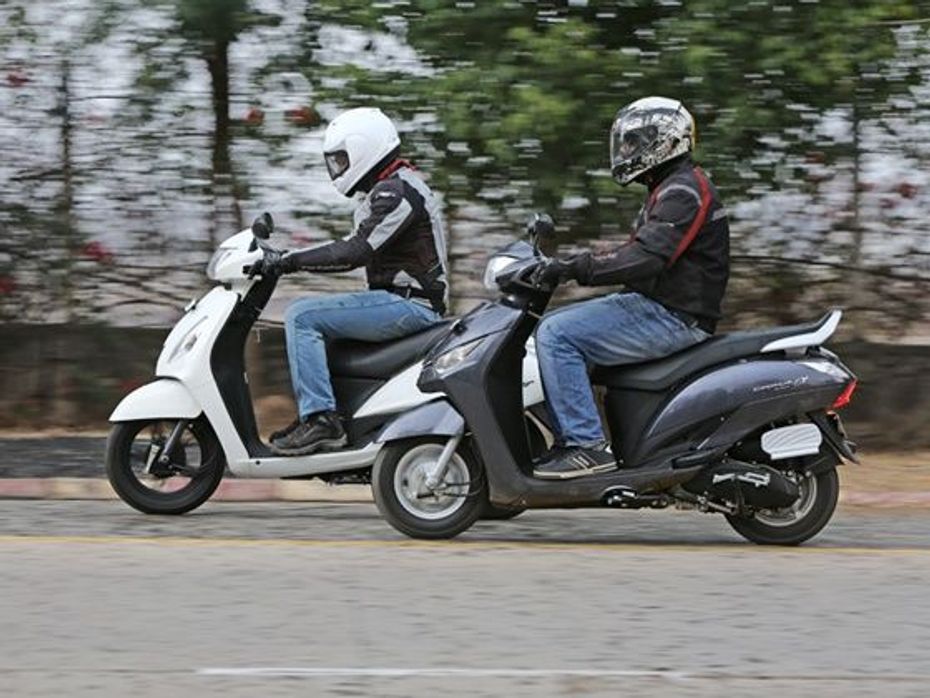
The Alpha is a little peppier, while the Jupiter has a slightly stronger top end edge. These are closely matched competitors on paper and in the real world. Both the scooters comfortably cruise at 60kmph, and from there gradually run out of steam. The real world efficiency is more or less similar, but none of the scooters match up to the company claimed 62kmpl.
When it comes to daily use, the Alpha feels more agile and alert compared to the Jupiter, and is also 4kg lighter than the 108kg TVS. However, the Yamaha’s firmer suspension setup can get a little uncomfortable on bumpy roads. The Jupiter comparatively is more composed and feels sure footed. It’s not as sharp as the Yamaha in terms of handling, but does hold on to the lines and rarely gets out of hand. The other vital feature is the brakes, and both emerge impressive in this as well. The two scooters use similar 130mm drum brakes in front and rear, and offer fair amount of feel and feedback. The Alpha doesn’t feature a brake lock clamp, which is missed especially if you park the scooter on a slope.

Verdict:
The TVS Jupiter comes with a pocket friendly price tag of Rs 44,204 compared to the Yamaha Alpha which retails at Rs 47,735 (both ex-showroom Delhi). Despite being Rs 3,500 cheaper the Jupiter comes with more features, better finish and design, and smoother engine making it the obvious pick.

Yamaha Alpha vs TVS Jupiter scooter comparison: Gallery

Yamaha Alpha disc brake variant launched

Yamaha Alpha gets three new colours

2014 Indian Auto Expo: Yamaha launches Alpha 113cc scooter at Rs...
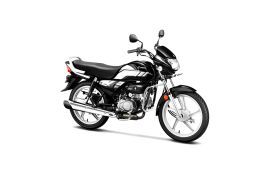 Hero HF Deluxe
Hero HF Deluxe
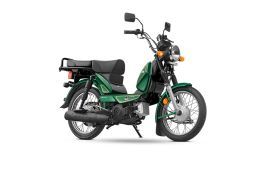 TVS XL100
TVS XL100
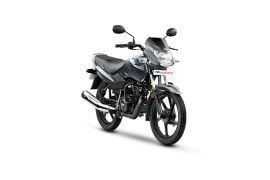 TVS Sport
TVS Sport
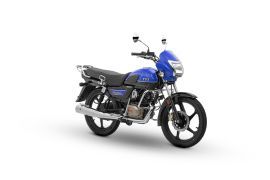 TVS Radeon
TVS Radeon
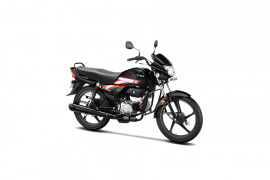 Hero HF 100
Hero HF 100
India's largest automotive community